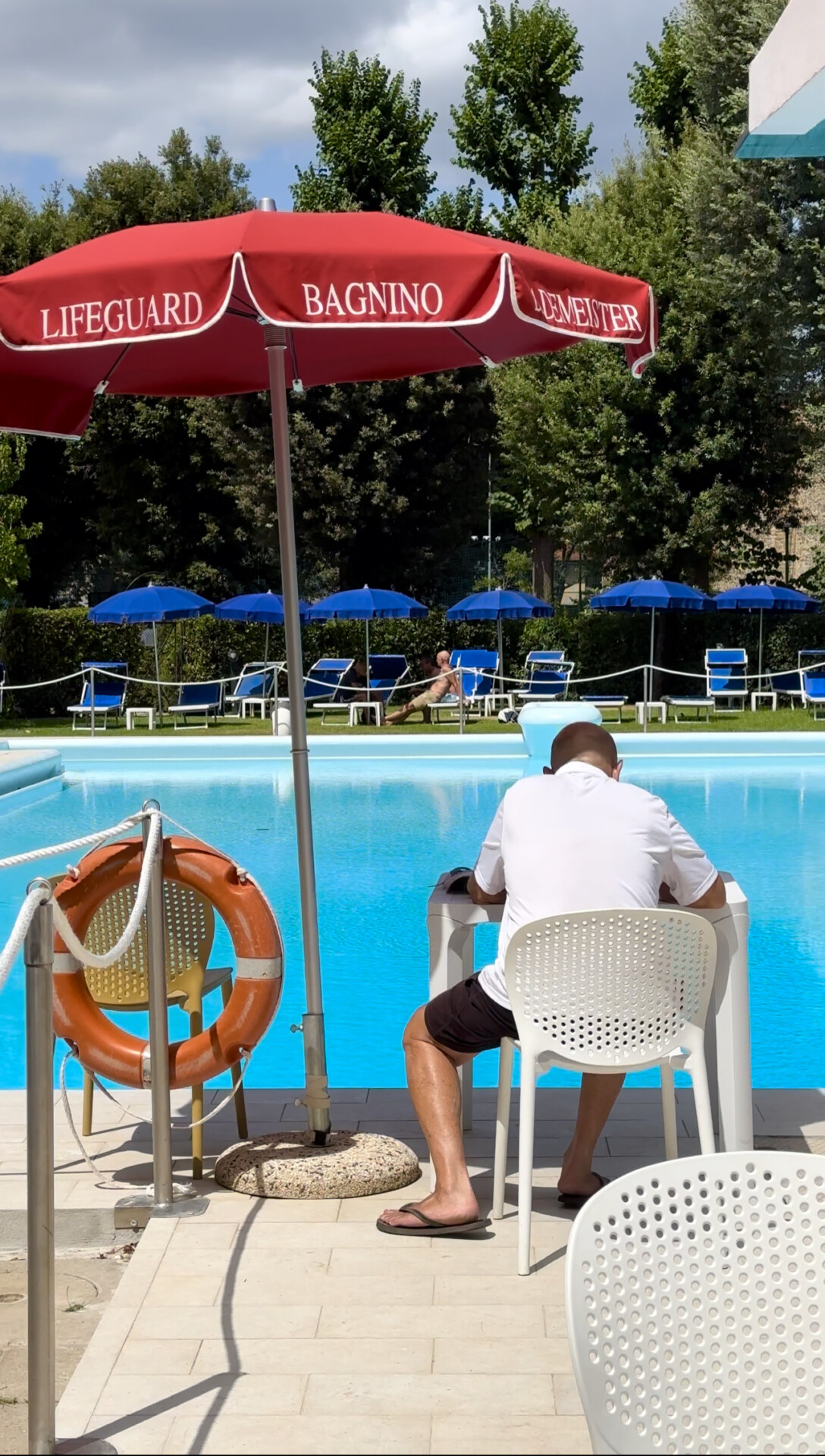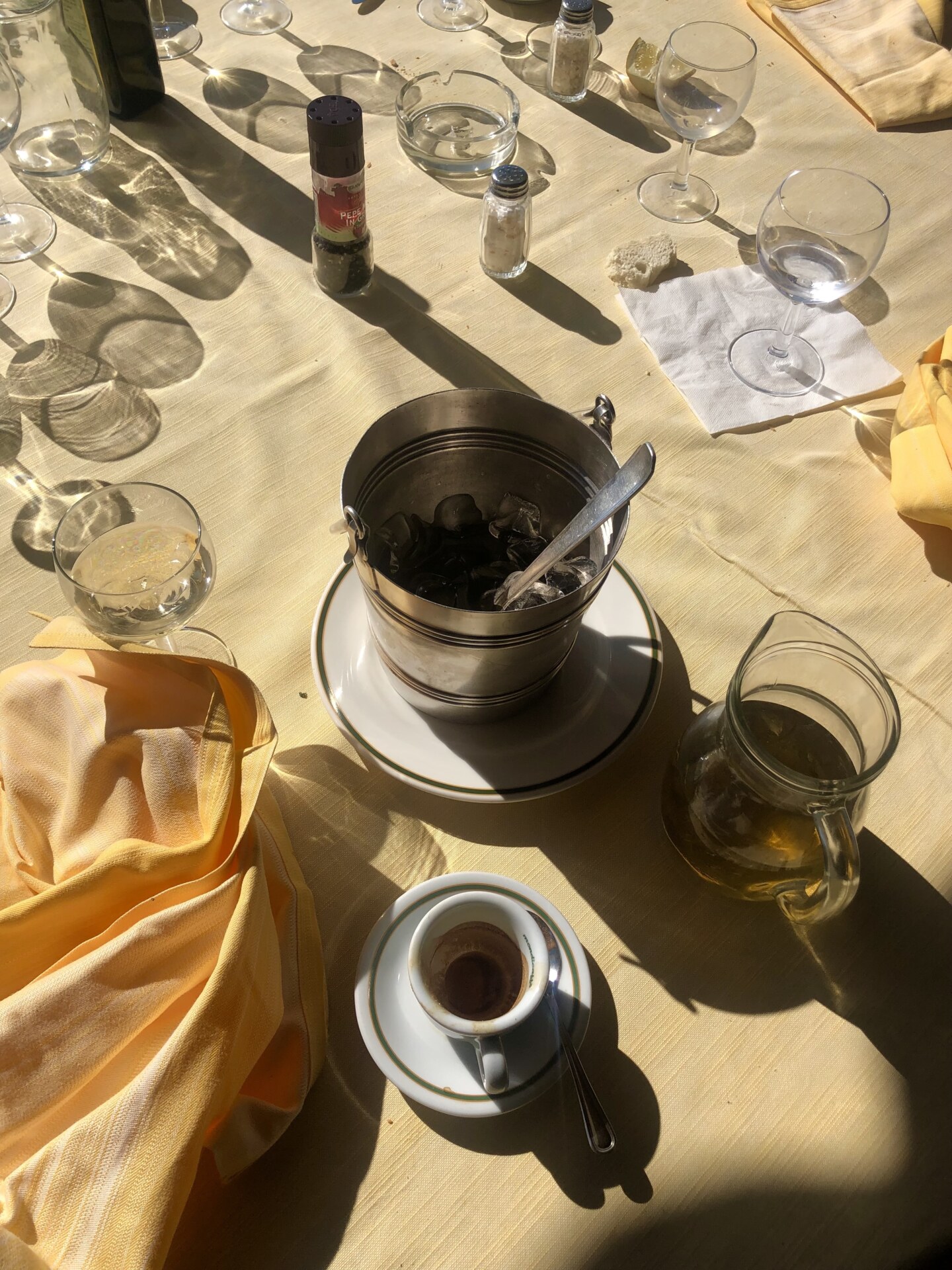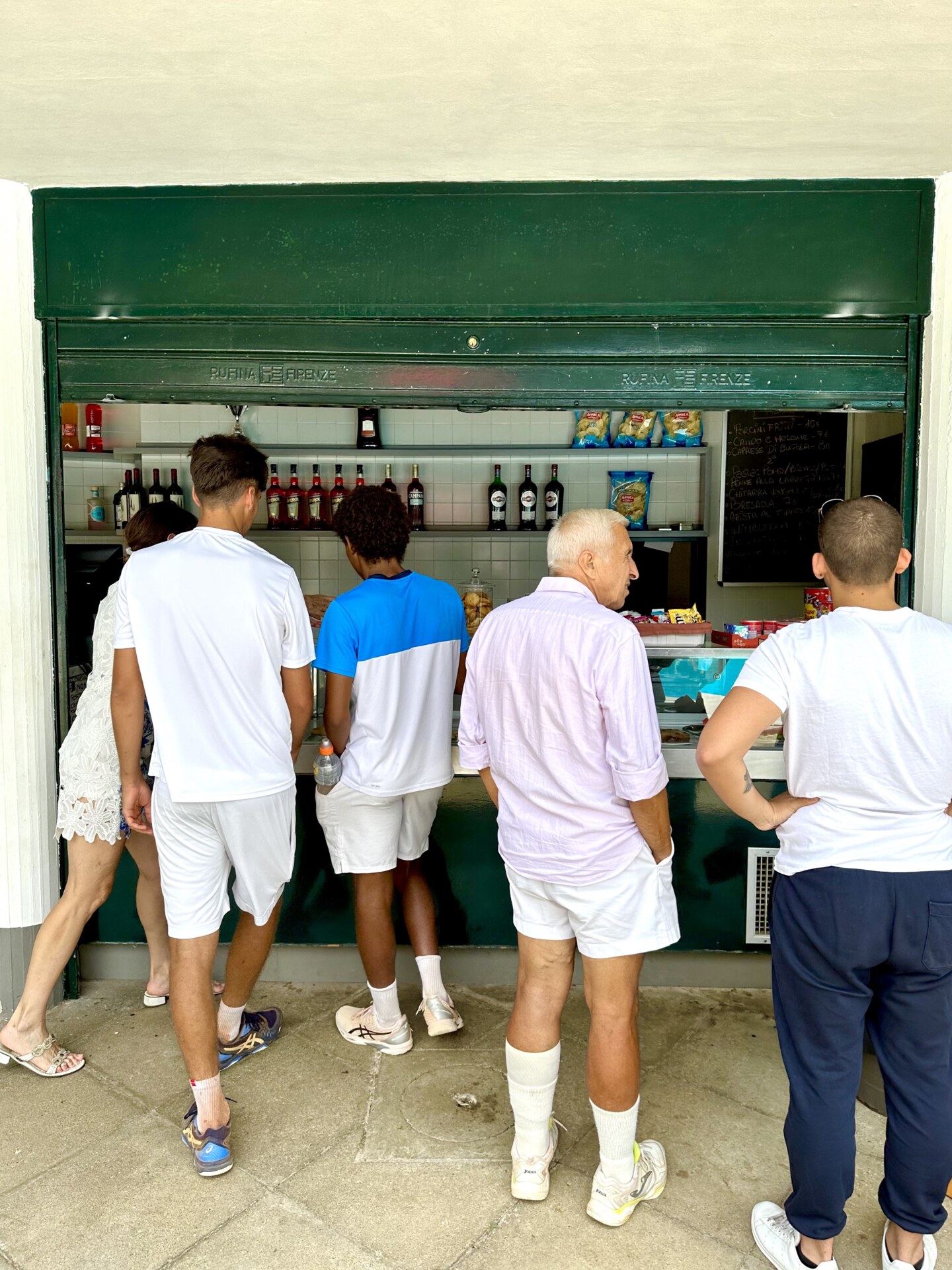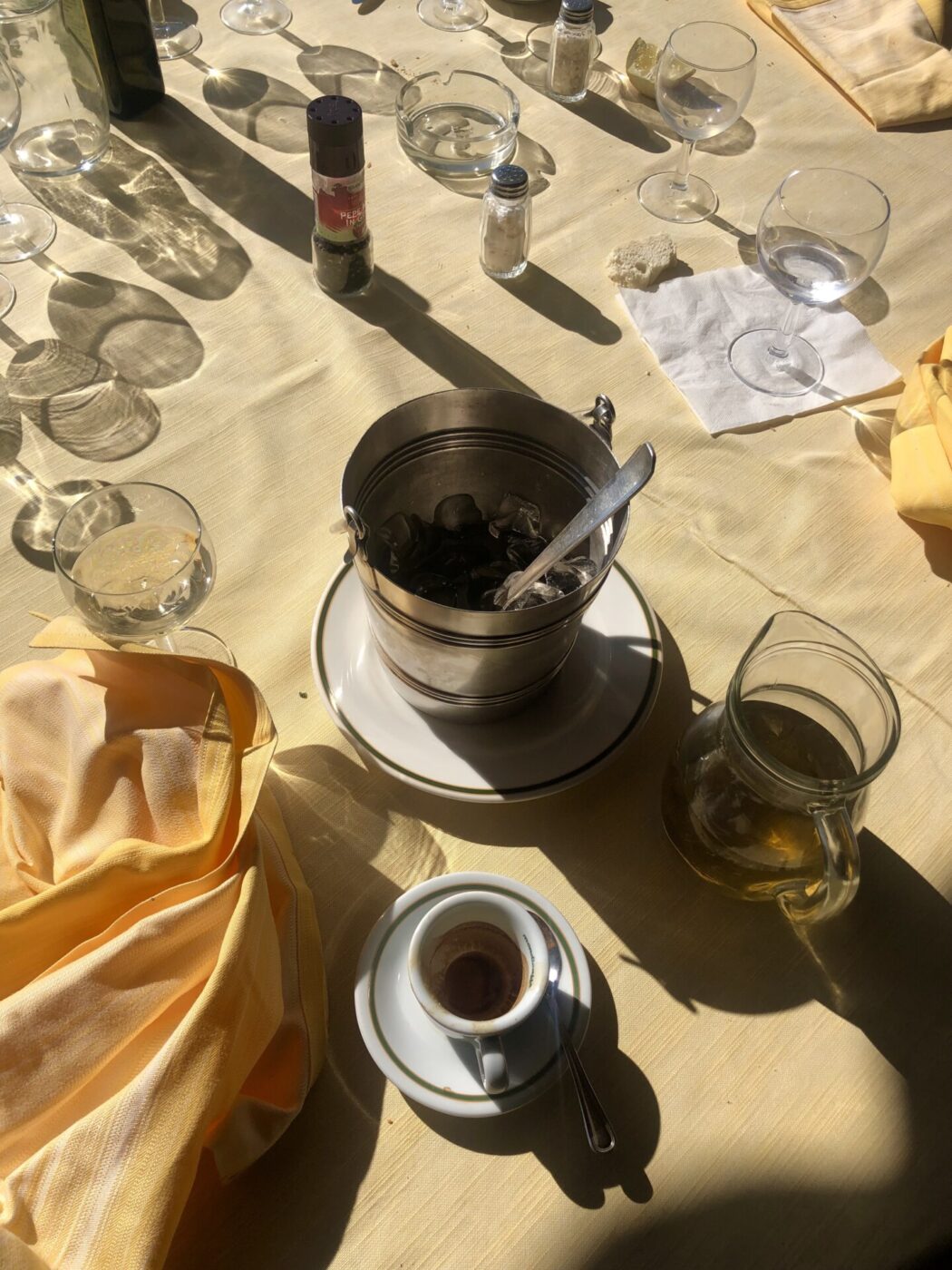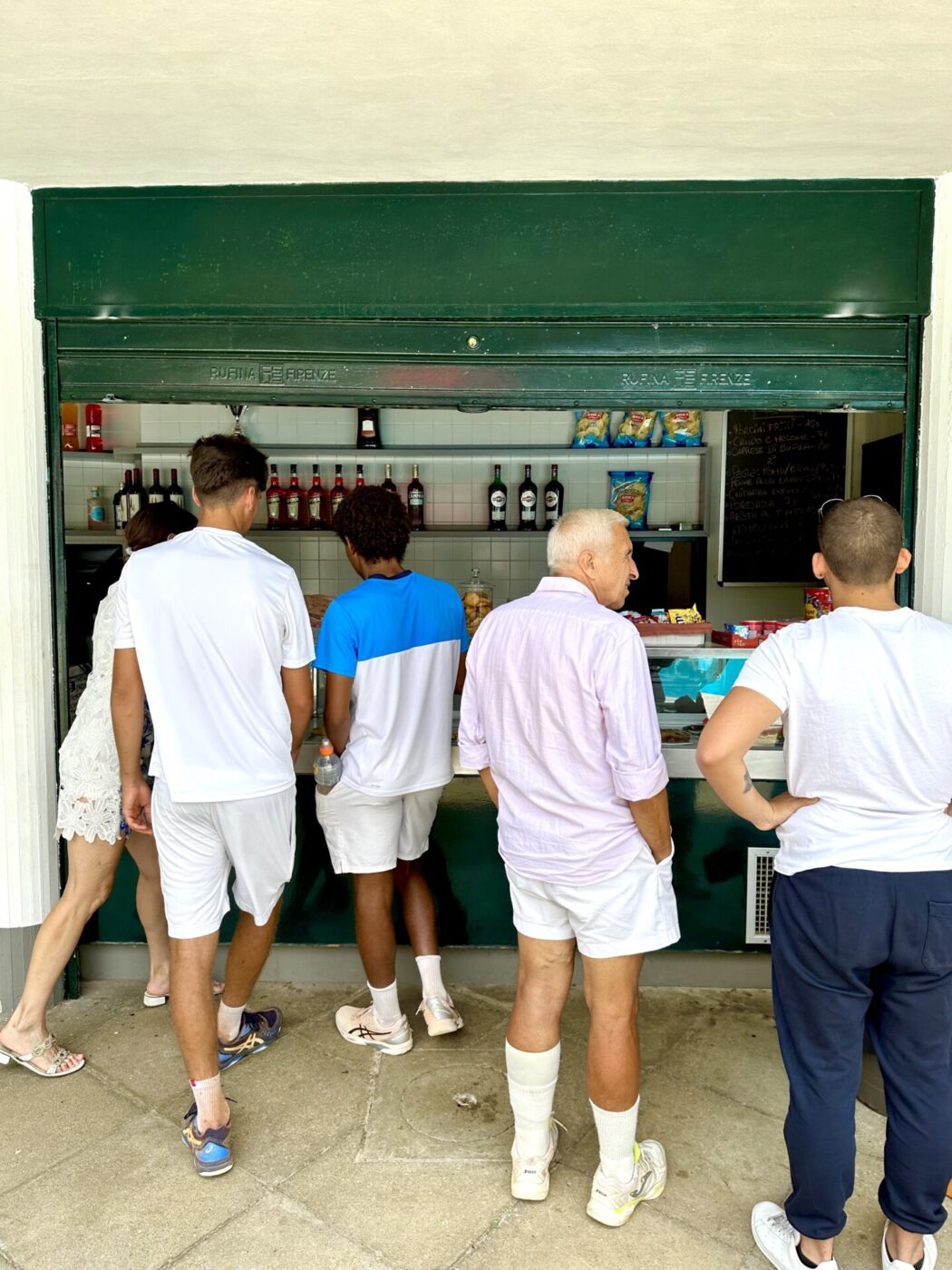In the sweltering heat of August, amidst flocks of sheeple eagerly trailing behind tour guides’ cherry-red flags, our cherished restaurants shutter their doors for the long awaited “ferie” and new refuges emerge: i circoli. These social clubs, which center around sports, are open year-round, but they take on a new meaning in summer, when working hours are at a minimum and days are whiled away playing tennis or cards, chatting with neighbors, and sipping on sgroppini.
The closest American equivalent would be something like a country club, though circoli are certainly less pretentious and with less of an economic barrier to boot. That’s not to say they aren’t “fancy”–to an extent. I’m sitting at a rickety metal table in one–Florence’s oldest circolo di tennis. Affectionately known as the “CT” and founded in 1898, the tennis club’s digs aren’t luxurious: there’s a simple reading room in a variety of beiges, a green felt table exclusively for burraco, and dusty trophies lining the walls. And yet, you’ll be expelled from a game for wearing anything remotely off-white, and god forbid the courts weren’t made of red clay.
On a summer’s day in the city, there’s nowhere else I’d rather be. Today, the 60s-vibe pool is adorned with an audaciously high diving board and a funny-looking, bald bagnino straight out of a Wes Anderson film. My husband and brother are analyzing the intricacies of the tennis match they just played, and, bored by yet another debate over flat serves and advantages, I turn my attention to the circolo’s characters:
- A graceful elderly lady sports oversized, square sunglasses, and a floral Lisa Corti pareo–with a tan and an impeccable hairdo as her accessories–and, while waiting for her prosciutto e melone, absentmindedly smokes. It’s all very sophisticated.
- At the pool bar, a man in his 70s relishes a spaghetto al pomodoro, proudly clad in the circolo shirt–a white polo, slightly stained with clay from a recent game, marked by an illustration of two crossed tennis rackets on the right side of the chest.
- Strolling by is another man–probably about 85, but going on 30–boldly wearing his bright red boxer swimsuit, a golden cross on a chain adorning his neck, and aviator sunglasses shielding his eyes. He looks ready to charm all the signore one breast stroke at a time.
The bar is pine-colored and shaded by white and green-striped awnings; old Campari bottles stand neatly behind it. Handwritten on the small chalkboard is the daily menu: spaghetto al pomodoro, pesto or vongole, insalata di baccalà, arista, bresaola, and contorni–simple, affordable, and satisfying. You can’t expect anything more, nor anything less, from a circolo. Here, conviviality is key, and eating with other members is habitual. No need to arrange a date; you sit and dine with whichever other members happen to be around.
These clubs–whether for golf, tennis, sailing, rowing, or just a bit of schmoozing–are some of the most community-minded places in Italy, though this was not always so. Organized sports in Italy began trending pre the country’s unification in schools and military forces, spreading into the public sphere with the opening of the first circoli: gymnastics in 1869, cycling in 1885, and rowing in 1888; unsurprisingly for the time, all of them were open to male members only. “Our club, founded in 1898, was the first in Italy to admit women,” president of CT Carlo Pennisi tells me. “One member, an Italian champion in 1918 and later a war Red Cross nurse, received the Silver Medal for Military Valor posthumously. Her name was Rhoda de Bellegarde.”
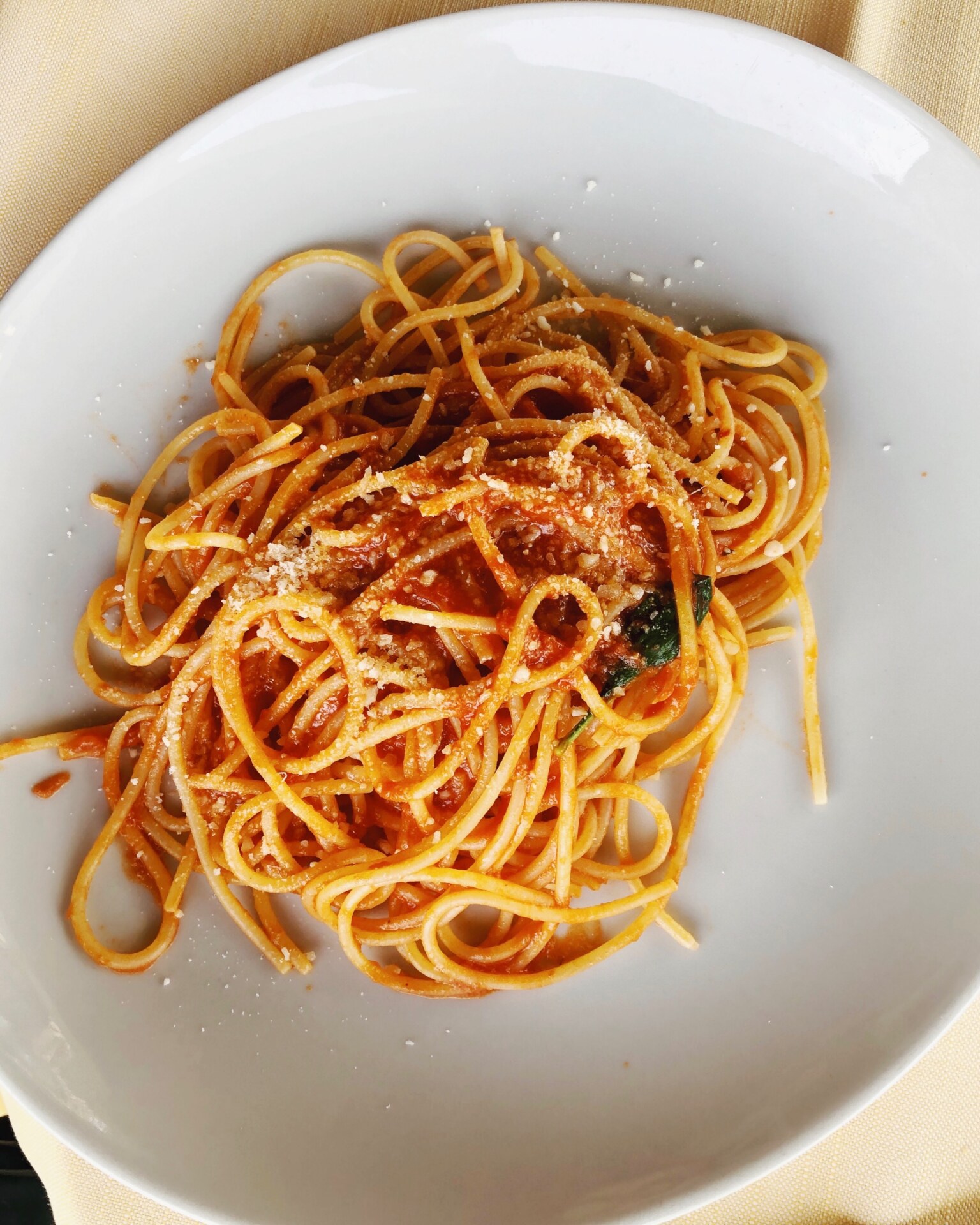
Italy’s circoli, however, aren’t just for the athletic; these clubs are also places for socializing, particularly salient for the older generations for whom circoli are a lifeline in the form of bocce and burraco. A longtime member of the Circolo Golf Roma, Acquasanta shares, “After golf, we gather under chestnut beams in the Casina’s most romantic area to continue playing, but with cards. Those who love games love all games. Here, sports rivalries reignite… When we challenge each other at golf or cards, we’re all kids again.”
My hope is that the younger generations rediscover the value in circoli too, and, according to the director of the Circolo Tennis di Bologna, Andrea Stasi, they are–and with enthusiasm. “We currently have at least 250 members under 35 and a long waiting list!” he pronounces.
I was introduced to circoli at a very young age. My grandpa, a golf enthusiast, would take me with him every weekend to Olgiata Golf Club in the hopes of turning me into the next child prodigy. To his misfortune, golf was not my forte, but I did perfect other skills, skills essential for a circolo–making friends of all ages, dominating in burraco tournaments, and learning the values of punctuality and appropriate attire.
Members often remain for life, as do those who make up the staff, the heart and soul of these places. I think often of Maurizio, the maître d’ of the circolo I frequented as a child, who would regale me with stories of my mom’s love for sweets in her youth. He and the rest of the team became friends, family even, who always made sure to keep one portion of broccolo romano (one which still hasn’t found a worthy competitor) and another of torta di mele (more apple than cake!) on the side for me. My tab was an ongoing one and was once mistakenly credited to the wrong member, who realized the blunder immediately when faced with an abnormally long bill of coffees and watermelon slices.
The monochromatic changing rooms, which I barely frequented–only occasionally, to take photos–were pale yellow, as were its iron lockers and the bathrobes, though a few pale pink ones slipped in sometimes. A long vanity with white, old-school hair dryers was marked by round mirrors at precise, equidistant lengths from one another. These locker rooms, and the occasional bagnino, were my introduction to Wes Anderson before ever having seen one of his movies.
And, just like his films, circoli are a bit decadent, a bit nostalgic, a bit classy, a bit stuffy, and a whole lot entertaining and amusing. And I couldn’t imagine a better place to have spent my childhood, nor to, most likely, spend my bone-creaking, burraco-winning years of retirement.
ARCI
Not all circoli are centered on athletic activities, however. In 1957, ARCI, a network of non-profit clubs, was born to address post-war cultural and social challenges, creating inclusive spaces where those of all backgrounds could come for political exchanges and rallies, complimentary arts and theater, and sports and music facilities. They remain hotbeds of both political activism and good ole’ parties even today (especially in Florence, where ARCI was founded). Membership is open to all for something like 10 euros a year, and the association now counts 4,796 cultural centers and over a million members.


